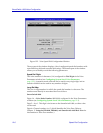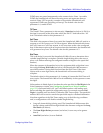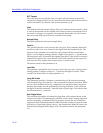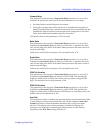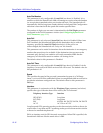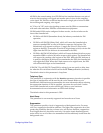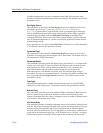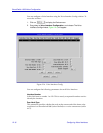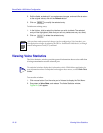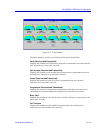
Configuring Voice Ports 12-13
SmartSwitch 1800 Voice Configuration
4W EM is the normal setting for a PBX EM tie-line interface that uses one pair of
wires for the incoming voice signal and another pair of wires for the outgoing
voice signal. 2W EM is for an EM tie line that uses a single pair of wires for both
the incoming and outgoing voice signal.
AC 15A or AC 15C are 4-wire signaling systems used by PBXs to communicate
with each other and other PBX-like communications equipment.
2W EM and 4W EM can be conÞgured in these modes, via the switches on the
front of the SmartSwitch:
¥ 2W EM or 4W EM IS (Immediate Start), the industry standards for EM
operation;
¥ 2W EM or 4W EM DD (Delay Dial), which will cause the SmartSwitch to
expect an attached PBX to raise its M-lead to request a dial register. The
SmartSwitch will respond as follows: 1) toggle the E-lead, 2) send a dial
register to the PBX, 3) return the E-lead to its original state, and 4) wait for dial
digits from the PBX (no dial tone is transmitted to the PBX).
¥ 2W EM or 4W EM WS (Wink Start), which will cause the SmartSwitch to expect
an attached PBX to raise its M-lead to request a dial register. The SmartSwitch
will respond by sending a dial register to the PBX. When the PBX indicates it
is ready for dial digits (no dial tone is transmitted to the PBX), the SmartSwitch
will toggle the E-lead. When the E-lead returns to its original state, the PBX
will transmit dial digits to the SmartSwitch.
If 2W EM TE or 4W EM TE (Timed EM) is selected, you can specify a delay time
for when the E-Lead follows the M-Lead in the TE Timer parameter (see above).
The default value for this parameter is Loop Start.
Telephony Type
This parameter, in conjunction with the Interface parameter (see above) speciÞes
the type of interface that will be used by the voice channel. Refer to your
SmartSwitch 1800 hardware documentation for more information about selecting
the appropriate interface. If EM is speciÞed, you must also set Switch 2 on the
front of the SmartSwitch to select an EM type. Refer to your hardware
documentation for more information on EM Switch Settings.
The default value for this parameter is OPX.
Hunt Group
This parameter is not currently supported and must be set to None.
Suppression
This parameter speciÞes a level of suppression of background noise. For most
calls, low suppression should be sufÞcient. The higher the suppression level, the
greater the possibility that low-volume voice will be lost; therefore, suppression
levels higher than low should be used only if it can be certain that background
noise will be low or all of the voice transmitted will be sufÞciently louder than the
background noise.




